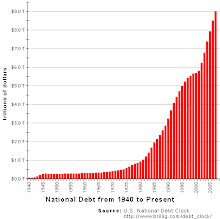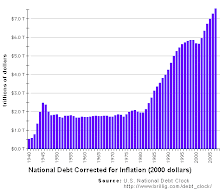WASHINGTON (AP) -- Call it the Terrible Teens.
The decade ahead could be a brutal one for America's unemployed -- and for people with jobs hoping for pay raises.
At best, it could take until the middle of the decade for the nation to generate enough jobs to drive down the unemployment rate to a normal 5 or 6 percent and keep it there. At worst, that won't happen until much later -- perhaps not until the next decade.
The deepest and most enduring recession since the 1930s has battered America's work force.
The unemployed number 15.4 million. The jobless rate is 10 percent. More than 7 million jobs have vanished. People out of work at least six months number a record 5.9 million. And household income, adjusted for inflation, has shrunk in the past decade.
Most economists say it could take at least until 2015 for the unemployment rate to drop down to a historically more normal 5.5 percent. And with the job market likely to stay weak, some also foresee another decade of wage stagnation.
Even though the economy will likely keep growing, the pace is expected to be plodding. That will make employers reluctant to hire. Further contributing to high unemployment is the likelihood of more people competing for jobs, baby boomers delaying retirement and interest rates edging higher.
All this would come after a decade that created relatively few jobs: a net total of just 464,000. By contrast, 21.7 million new jobs were generated between 1989 and 1999.
Economist David Levy, chairman of the Jerome Levy Forecasting Center, says the country faces a new era of chronically high unemployment, averaging 8 percent or more over the next decade.
The "New Abnormal," he calls it.
Levy thinks the New Abnormal also means average pay will dwindle, along with consumer prices. That would make it harder for households to pay down debt, he warns.
By the Federal Reserve's reckoning, the jobless rate could remain as high as 7.6 percent in 2012. And it would take two or three years after that for the job market to return to normal, the Fed says.
It's possible jobs won't return to pre-recession levels at any point over the next 10 years, Levy says.
That's mainly because the economy's recovery, sluggish by historical standards, isn't expected to regain its vigor over the next few years. As a result, companies will be in no rush to ramp up hiring.
Other analysts think the economy will recover the jobs wiped out by the recession by 2013 or 2014 but that the unemployment rate will stay high. They note that the healing economy will cause more people to stream back into the labor force, vying for too-few jobs.
In addition, baby boomers whose retirement accounts have shrunk could put off retiring and stay in the work force longer. That would leave fewer positions available for the unemployed.
Other contributing forces -- businesses squeezing more work from employees they still have and relying more on part-time and overseas help -- have intensified. And record-high federal budget deficits and the threat of inflation could drive up interest rates, which could hobble growth and restrict job creation.
All those factors could combine to keep unemployment high.
"It will be the mother of all jobless recoveries," predicts economic historian John Steel Gordon.
On the other hand, it's possible some technological innovation not yet envisioned could generate a wave of jobs. Yet at the moment, most economists aren't betting that any such breakthroughs will rescue the labor market.
The last time the jobless rate reached double digits, in the early 1980s, it took six years to bring it down to normal levels.
Unemployment hit a post-World War II high of 10.8 percent at the end of 1982 as the country was emerging from a severe recession. The rate fell to around 5 percent in 1988. It took less than two years for the number of jobs to return to its pre-recession level.
In this recovery, the economy is far more fragile.
Hard-to-get credit is exerting a drag. Wounds from the banking system's worst crisis since the Great Depression will take years to fully heal. People and companies, scarred by the crisis, are likely to restrain borrowing, spending and investing.
Some analysts think the jobless rate might have already peaked at 10.2 percent in October. But most economists predict the rate will peak at around 10.5 percent by the middle of next year.
"We are digging out of a very deep hole," says Lynn Reaser, chief economist at Point Loma Nazarene University in San Diego and chief economist for the National Association for Business Economics.
Reaser estimates it will take until 2015 for the unemployment rate to drop to 5.5 percent.
A sputtering job market carries other consequences. One is flat wages. When many people compete for few jobs, employers have no incentive to raise pay.
The economic shocks of the past decade already have cut into Americans' incomes. That's among the reasons why people feel they're standing still economically.
Median household income, adjusted for inflation, fell to $50,303 in 2008, according to the U.S. Census. That gauge combines wages and salaries, investment income and government benefit payments like Social Security. It's down 4 percent from a peak of $52,587 in 1999, when incomes were bolstered by stock gains from the dot-com boom.
That bubble burst in 2000. Since then, workers have seen meager wage gains. Adjusted for inflation, wages grew about 13 percent in the past 10 years -- the slowest pace in five decades, according to calculations made by Scott Hoyt of Moody's Economy.com.
That trend is predicted to continue.
"There will be a continued hollowing-out of the middle class," says H.W. Brands, a historian at the University of Texas.
He points to productivity growth, which has let companies produce more with leaner work forces, the offshoring of service-sector jobs and the shrinking of factory jobs.
That's why Vicki Adriano, 51, who works at a General Motors plant in Lordstown, Ohio, looks ahead to the coming decade with trepidation.
The economic wreckage of the past year means she'll probably have to work longer than she had expected at the factory-- at least seven more years. She frets about the loss of economic security.
"Everything you worked for all those years can be gone in a minute," she says.
Saturday, December 26, 2009
Even as economy mends, a jobless decade may loom
In the December 26, 2009 article "Even as economy mends, a jobless decade may loom," Associated Press economics writer Jeannine Aversa reports the United States could have high unemployment rates until at least 2015. Last year I cautioned that whoever won the 2008 U.S. Presidential election would endure a prolonged economic slowdown and would probably receive more blame than he or she deserves. We will see.
Subscribe to:
Post Comments (Atom)






We are now in a job market that is composed of low wage part time and temporary jobs.
ReplyDelete